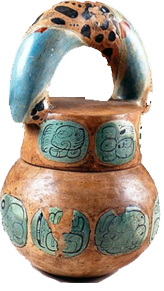
Real hot chocolate or Mexican chocolate is a style of drinking chocolate that is popular in Mexico and through Central America to Colombia.
The Olmec, Aztecs and the Maya were the first to make and drink chocolate for thousands of years before it was discovered by the rest of us.
The origin of the word chocolate comes from xocolatl (bitter water), from the ancient Náhuatl language of the Aztec.
Drinking chocolate is more than 4,000 years old but solid or eating chocolate, is still a teenager at a mere 200 years old!
The drink originally contained cacao, chilli, cold water, and sometimes corn.
The current version is made with chocolate, panella, and cinnamon. It is drunk every day for breakfast or as a snack - this is common for children in Colombia, Mexico and all Central America.
The botanical name for cocoa is Theobroma
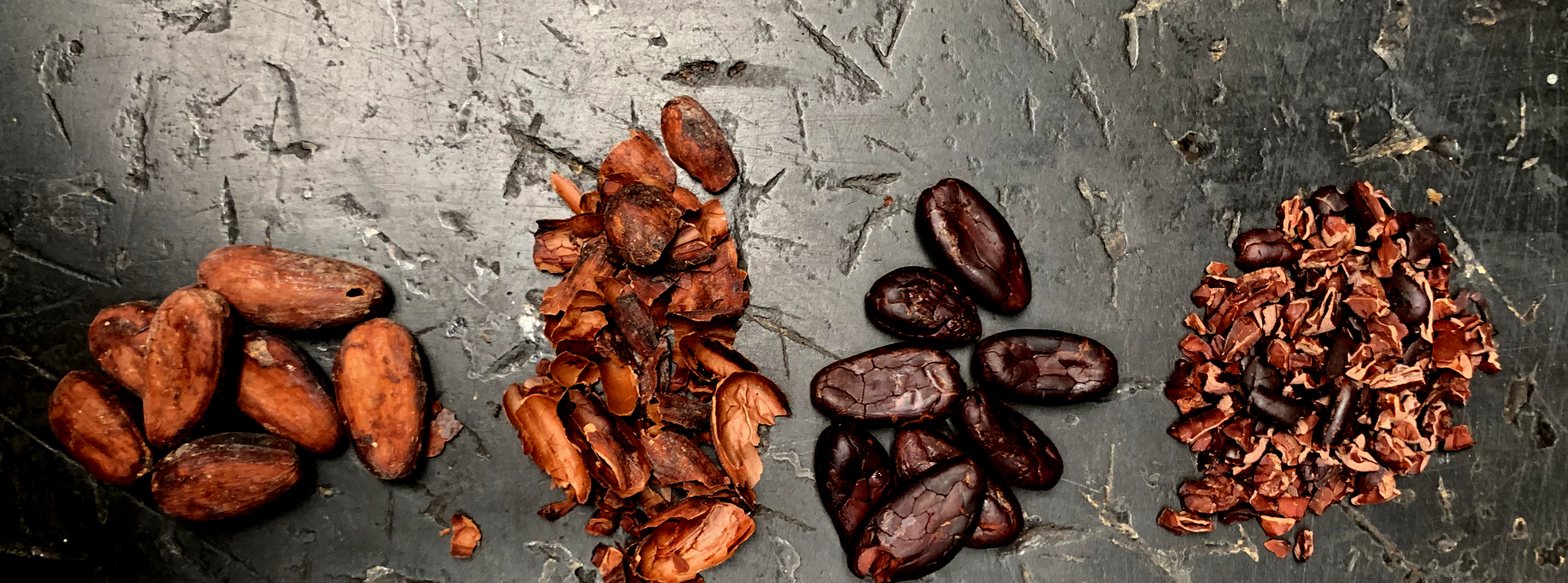
, which means "food of the gods", The Aztecs made a whole range of drinks using ground cocoa nibs and cold water combined with different seeds, honey, nuts, and spices.
The drink was an intrinsic part of everyday life being used in rituals by priests as well as nobility it was a male only beverage as they thought it too powerful for ladies’ hearts.
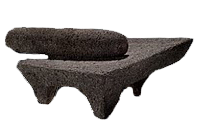
There are lots of historic references made to the Aztecs and cocoa, the Aztecs adopted it from the Mayan and Olmec Cultures who believed it to be a gift from god who told them that drinking it would make them braver, stronger, wiser and more potent lovers. The Mayans consumed chocolate by first harvesting the beans -- from cacao trees.
They fermented and dried them, roasted them, removed their shells, and ground them into paste on a metate and mano de piedra. (much of that process remains unchanged to this day.)
They combined this paste with cold water, chili peppers, and other spices, then poured the spicy, bitter mixture back and forth between two cups to create a frothy head, the frothier the drink was the stronger potion it would become.
The elite would savour it at the end of a meal, like todays diners might have a brandy or port. (Cocoa paste was probably added to corn gruel and consumed in other ways, too. Chocolate is one of the many things the Spaniards brought back from the new world with them.
European version
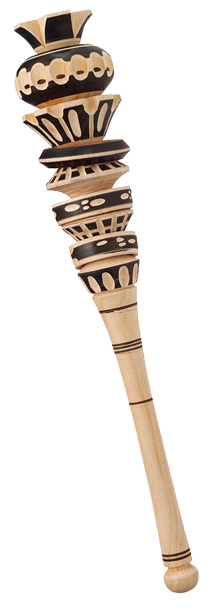 The molinillo [moh-lee-NEE-yoh] is the Mexican chocolate "whisk" or "stirrer". It is made of "turned" wood and it is used to froth warm drinks such as hot chocolate this tool was actually invented by the Spaniard colonists in Mexico around the 1700's. The first molinillos were made to fit into a jug with the handle extending out of the top. The molinillo was then rotated between the users two hands placed palm-sides together. The twisting motion frothed the chocolate.
The molinillo [moh-lee-NEE-yoh] is the Mexican chocolate "whisk" or "stirrer". It is made of "turned" wood and it is used to froth warm drinks such as hot chocolate this tool was actually invented by the Spaniard colonists in Mexico around the 1700's. The first molinillos were made to fit into a jug with the handle extending out of the top. The molinillo was then rotated between the users two hands placed palm-sides together. The twisting motion frothed the chocolate.
The Spanish explorers were no so enamoured with the flavour after all it was called bitter water (Xocolatl) but they loved its value and what it could buy.
So they took chocolate back to Spain where it was given to the church to look after where the nuns changed the cold water to hot which melted the cocoa butter and made for a much smoother drink.
Added a little honey and some spices and It became the Kings' Official Drink in Spain.
Around the end of the eighteenth century (1780 - 1800), Sir Hans Slone started preparing chocolate with milk and sugar to create what we know today as Hot Chocolate.
The drink became so fashionable many of the leading European porcelain manufactures such as Limoges in France began making specialised pots and cups just to serve chocolate.
If you love hot chocolate and drink a lot of it, then variety is the spice of life. Here are some of my favourite ways to add that extra bit of indulgence to your pleasure.
But first, a few background notes:
There is a difference between cocoa and hot chocolate.
Cocoa is made from cocoa powder, milk powder, salt, silica (anti-caking agent), but hot chocolate is made from shaved chocolate.
Hot chocolate is richer because chocolate has higher cocoa butter content than cocoa powder (which is a cocoa bean with the butter squeezed out)
Cocoa powder mixed with full fat milk or cream can give the richness of chocolate shavings mixed with water. There is no right or wrong: it’s what you prefer.
The chocolate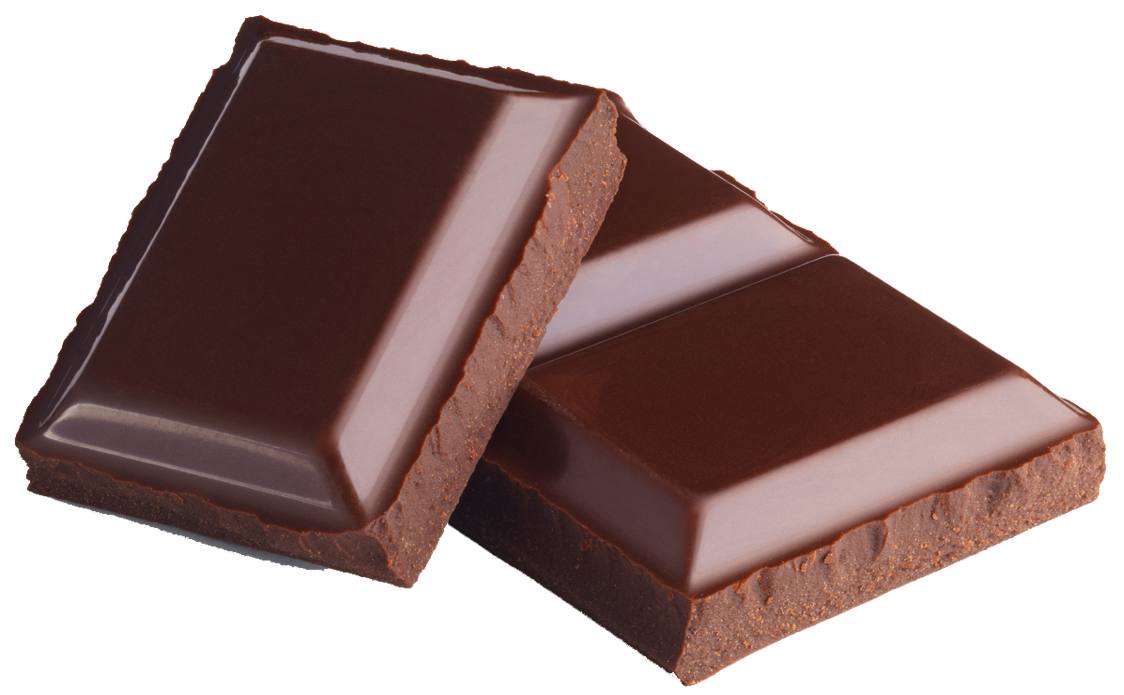
As the main attraction, the choice of chocolate is very important. Most recipes use plain chocolate, from 54% 85% cocoa solids but you can use milk or white depending on how you like it".
Milk or cream
Full fat milk is the standard for hot chocolate, its ok to finish the chocolate off with a little single cream –but just enough to give it a luxurious silkiness in the mouth. If you want super-rich hot chocolate, don’t use cream, add a teaspoon of butter to each cup before you pour in the hot chocolate. The butter turns average cocoa into a really good hot chocolate.
Flavourings
Sweet spices have always been a popular addition to chocolate drinks, cinnamon nutmeg star anise and vanilla are common additions. A touch of chilli and a sprinkle of salt, will make the whole thing taste more chocolatey.
To top or not?
Whipped cream, grated chocolate, dried fruit, marshmallows, or sprinkles the choice is yours.
Let’s Make Xocolat
I’ve tested lots of different ways to make drinking chocolate and found this method is the best, beginning with actual chopped chocolate rather than cocoa powder.
It’s nearly impossible to get silky smooth, and cocoa powder doesn’t have the cocoa butter content that a chocolate bar has, so it’s can never be as rich and creamy.
That’s why the best drinking chocolate always starts with real chopped chocolate:
The next thing I have played with is how to actually incorporate the chocolate into the milk.
A lot of recipes say to add the chopped chocolate directly into the hot milk, and stir until the chocolate melts, or flake the chocolate with a vegetable peeler.
How to Make Real drinking Chocolate:
Serves 2
200ml whole milk
75ml single cream
70g chocolate, flakes
heat up milk and cream in a saucepan (with a smidge of panella, which is optional):
I bring it to a scalding temperature, you don’t need a thermometer you can tell when it’s hot enough when little bubbles start to form on the side of the pan, but it’s not quite boiling Don’t let the milk boil, or your end result will be grainy.
When the milk is hot, I turn off the heat, and add chocolate straight into the milk whisk.
Hot Chocolate Tips:
Can my hot chocolate be reheated? Yes, I recommend reheating it on the stovetop until it’s hot and steamy (but not boiling), instead of using the microwave where it’s harder to control the heat.
How to store leftover hot chocolate: Let the chocolate cool to room temperature, then refrigerate for up to 3 days. Reheat per instructions above.
Hot chocolate vs cocoa: What’s the difference? Hot chocolate is made with actual chopped up chocolate (like this recipe), whereas hot cocoa is made from cocoa powder. Hot chocolate is richer.
